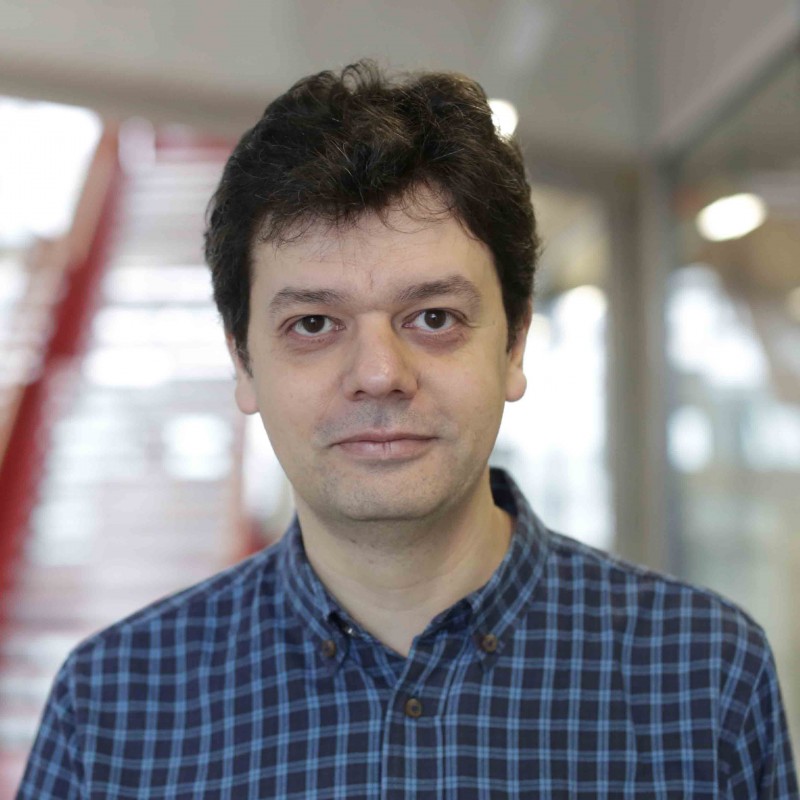LMS researchers have had many successes in securing intellectual property and collaborative programmes with commercial partners. Over the last five years this has included:
- Sixteen patent applications made by LMS scientists for a range of disease modulating agents, compounds and methods.
- Seven spin-out companies established directly or indirectly by LMS scientists (Enleofen, Critical Pressure, Geras Bio, Medusa, Planta, Genome Biologics and Enhanced Genomics).
- Twenty-one industrial collaborations in place, with nineteen different companies, spanning a range of activities and benefits. Some examples include: joint studentships (Syngenta, AstraZeneca), collaborative research projects (AstraZeneca, Rejuvenate Biomed, Emenda Therapeutics, Inspiralis, GSK, Novartis, Agilent Technologies, New England Biolabs, Siemens), inward investment from Industry partners (Bayer AG, Hoffmann La Roche, Sunovion, AstraZeneca) and technology-based collaborations (Siemens, Cytec Biosciences, FUJIFILM VisualSonics).
New collaborations are encouraged through our Innovation Mixer programme and translational activity is supported by LifeArc and Imperial IPC.
Case studies
The case studies below illustrate some of the diverse experiences and routes to translation taken within the LMS in recent years.
Jesus Gil (Senescence)
 Cellular senescence has been implicated in age-related diseases including arthritis, lung fibrosis, cataracts, atherosclerosis and cancer. Eliminating senescent cells improves health span, extends lifespan and reduces the severity of age-related pathologies. The identification of drugs regulating senescence (2010-12), and senolytics (2016-18), has been a core objective of two Development Gap Fund (DGF) projects (funded by MRCT/LifeArc) in the Gil laboratory. The group has identified a number of compounds with the ability to eliminate senescent cells (patent GB1708456.7, 2017). This work led to a major industrial collaboration with Unity Biotechnology (2017-19), a US company specialising in therapeutics for age-related diseases. The group has described cardiac glycosides (such as digoxin or digitoxin), off-patent drugs used in millions of heart patients, as senolytics (Guerrero et al. 2019, Nat Metab 1, 1074). Collaborators have started first-in-human pilot studies to assess these in cancer treatment. A further patent filing (A813/3277, 2017) described the use of sugar-modified prodrugs as senolytics (Guerrero et al. 2020, Aging Cell 4, e13133). To assess the senolytic potential of inhibitors against a novel target the Gil laboratory are collaborating with an Imperial start-up. Two further patents are in the process of being filed through LifeArc and Imperial IPC.
Cellular senescence has been implicated in age-related diseases including arthritis, lung fibrosis, cataracts, atherosclerosis and cancer. Eliminating senescent cells improves health span, extends lifespan and reduces the severity of age-related pathologies. The identification of drugs regulating senescence (2010-12), and senolytics (2016-18), has been a core objective of two Development Gap Fund (DGF) projects (funded by MRCT/LifeArc) in the Gil laboratory. The group has identified a number of compounds with the ability to eliminate senescent cells (patent GB1708456.7, 2017). This work led to a major industrial collaboration with Unity Biotechnology (2017-19), a US company specialising in therapeutics for age-related diseases. The group has described cardiac glycosides (such as digoxin or digitoxin), off-patent drugs used in millions of heart patients, as senolytics (Guerrero et al. 2019, Nat Metab 1, 1074). Collaborators have started first-in-human pilot studies to assess these in cancer treatment. A further patent filing (A813/3277, 2017) described the use of sugar-modified prodrugs as senolytics (Guerrero et al. 2020, Aging Cell 4, e13133). To assess the senolytic potential of inhibitors against a novel target the Gil laboratory are collaborating with an Imperial start-up. Two further patents are in the process of being filed through LifeArc and Imperial IPC.
David Carling (Cellular Stress)
 AMP-activated protein kinase (AMPK) plays a key role in regulating energy homeostasis and has attracted significant interest as a potential drug target for metabolic diseases, including obesity and type 2 diabetes. In addition, changes in metabolism that occur in cancer suggest that targeting AMPK might provide a therapeutic opportunity. The Carling laboratory has studied the regulation and role of AMPK using a wide range of approaches from biochemical and structural studies through to in vivo physiological studies using transgenic mouse models. Having this in-depth understanding combined with a detailed insight into the role of AMPK in vivo provides a strong platform for exploring its therapeutic potential. This has allowed the Carling laboratory to form a close and long-standing collaboration with AstraZeneca. This has provided direct support (2 CASE PhD studentships and the secondment of an AstraZeneca-funded PDRA) as well as access to reagents (small molecules, animal models and new technologies).
AMP-activated protein kinase (AMPK) plays a key role in regulating energy homeostasis and has attracted significant interest as a potential drug target for metabolic diseases, including obesity and type 2 diabetes. In addition, changes in metabolism that occur in cancer suggest that targeting AMPK might provide a therapeutic opportunity. The Carling laboratory has studied the regulation and role of AMPK using a wide range of approaches from biochemical and structural studies through to in vivo physiological studies using transgenic mouse models. Having this in-depth understanding combined with a detailed insight into the role of AMPK in vivo provides a strong platform for exploring its therapeutic potential. This has allowed the Carling laboratory to form a close and long-standing collaboration with AstraZeneca. This has provided direct support (2 CASE PhD studentships and the secondment of an AstraZeneca-funded PDRA) as well as access to reagents (small molecules, animal models and new technologies).
Declan O’Regan (Computational Cardiac Imaging)
 Modelling of complex traits in cardiac structure and function offers a powerful approach for understanding mechanisms and outcomes in heart failure. The O’Regan laboratory have developed a collaboration with the BioMedIA team at Imperial to develop software tools to track the motion of heart in three dimensions using real time analysis of clinical MR imaging. Using novel machine learning algorithms for time-to-event prediction tasks they filed a patent for automated survival prediction from human cardiac motion analysis (GB1816281.8) and this technology is now being evaluated in the NHS funded through an NIHR Artificial Intelligence in Health and Care Award. This work has also catalysed the development of a collaboration with Pharma (Bayer AG) to fund a scientist at the LMS to identify potential drug targets for diastolic heart failure through motion analysis of large genotyped populations.
Modelling of complex traits in cardiac structure and function offers a powerful approach for understanding mechanisms and outcomes in heart failure. The O’Regan laboratory have developed a collaboration with the BioMedIA team at Imperial to develop software tools to track the motion of heart in three dimensions using real time analysis of clinical MR imaging. Using novel machine learning algorithms for time-to-event prediction tasks they filed a patent for automated survival prediction from human cardiac motion analysis (GB1816281.8) and this technology is now being evaluated in the NHS funded through an NIHR Artificial Intelligence in Health and Care Award. This work has also catalysed the development of a collaboration with Pharma (Bayer AG) to fund a scientist at the LMS to identify potential drug targets for diastolic heart failure through motion analysis of large genotyped populations.
